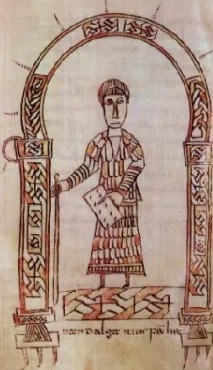The development of the earliest cities in Mesopotamia and the Middle East led to a substantial increase in violence between inhabitants. Laws, centralized administration, trade and culture then caused the ratio of violent deaths to fall back again in the Early and Middle Bronze Age (3,300 to 1,500 BCE). This is the conclusion of an international team of researchers from the Universities of Tübingen, Barcelona and Warsaw. Their results were published in Nature Human Behaviour.
Imagine living in a pod in a city crammed togther with a bunch of annoying stinky mfs and you are constantly bloated because you are eating a shitty diet that is mostly grain with no space to escape. I would also bonk some noggins.
WTF Did you just bonk my brothers noggin? Time to hand out some righteous noggin bonkin
The researchers put the increase in violence in the 5th and 4th millennia BCE down to the agglomeration of humans in the first, still poorly organized, cities. The rate of violence only reduced significantly once legal systems, a centrally controlled army, and religious institutions (for example, religious festivals) developed.
this seems to be the origins of the Tower of Babel story to me… in the Late Bronze Age people still told stories about a time long before (3000 years prior), when people had tried to settle down in those poorly organized, agglomeration cities mentioned in the article… they still told stories about the chaos of cities without laws/religion and no common language…
Huh, that’s an interesting theory. I like it.
Reminds me of how things like flood myths might have actually come from times of great natural disasters that got passed down in stories.
I’ve also always wondered if stories about elves, dwarves, etc. are ancient, tattered memories of prehistoric times when homo sapiens was not the only hominid walking the earth.
We overlapped with Neanderthals, Denisovans, Homo floresiensis, etc. (And interbred. https://www.nationalgeographic.com/science/article/enigmatic-human-relative-outlived-neanderthals ) So there was a time when anatomically modern humans walked the earth when other almost-human-but-not species still lived.
And it’s always seemed to me the variety of almost-humans in mythology from around the world might be in some cases an ancient memory of that.
in general i think we undervalue the ability of pre-literate humans to keep memories alive for truly inconceivable stretches of time… especially when they are really important, like when entire cities tear themselves apart with anarchy and no doubt every known disease as a result… the drama of it can’t be overstated on the minds of the people who lived it… they had only recently been kicked out of Eden, which was also very real in their minds… those people knew all the Gods had turned their backs on them, because they lived the first real large scale human suffering…




